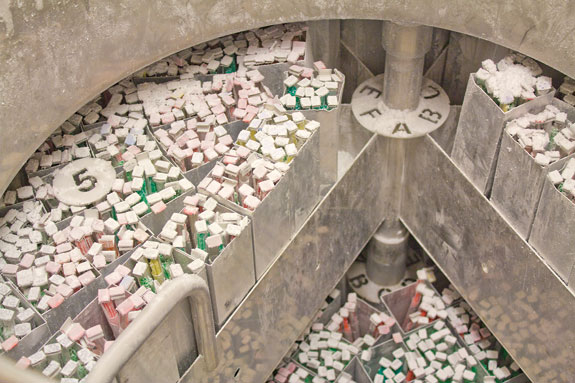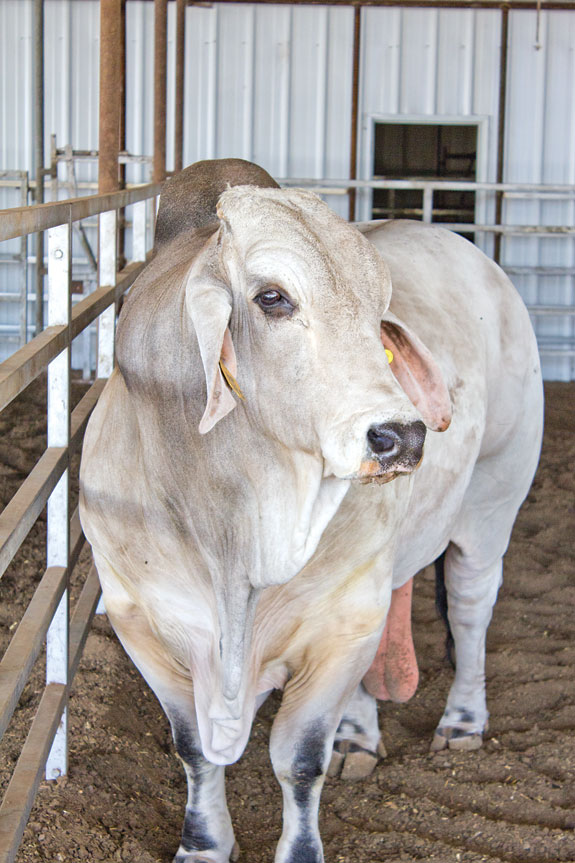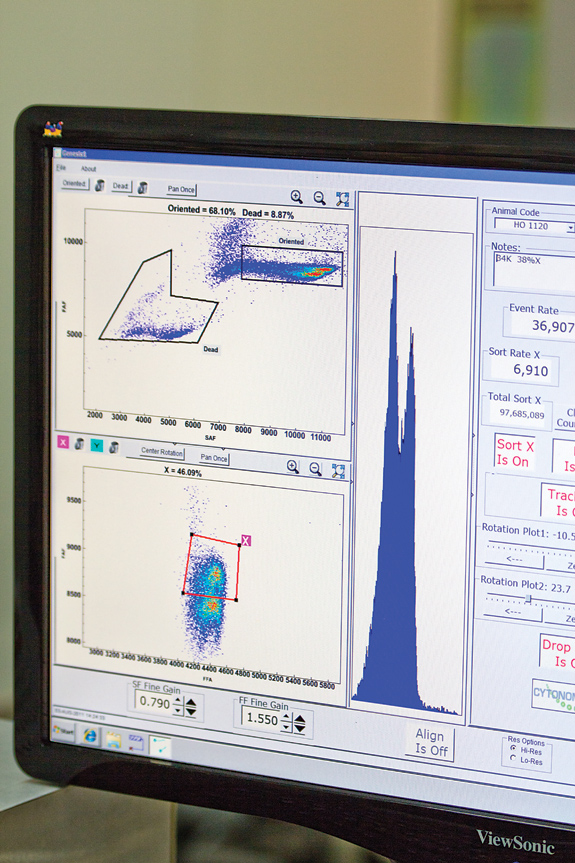The economic advantage of the sexed semen breeding system is the result of the revenue difference associated with producing more heifers (or bulls), compared to the added cost of using sexed semen versus conventional A.I. Specifically, the added revenue captured by taking advantage of the higher-valued gender, less the added breeding system cost, results in a significant return on the investment.
In any situation using A.I. where there is a gender difference of more than $150 per head, sexed semen warrants consideration.
The other costs in a synchronized A.I. breeding system do not change, so the semen cost and reproduction rate are the only differences.

Currently, sexed semen is expected to produce a conception rate of about 85 percent of conventional semen because there are fewer sperm cells in the sexed semen straw. The semen is about 87 percent accurate for the selected gender.
Pregnancy, calving and weaning rates are a result of the entire breeding system including nutrition, management, herd health, synchronized breeding, etc.
Semen is one component of the breeding costs and is not significant. In order to put semen cost into perspective, it needs to be compared to the value of the weaned calf produced.
Sexed semen is primarily used in the dairy industry for breeding replacement heifers. The gender difference for week-old dairy calves can be as much as five to 10 times the value of bull calves.
As the beef cattle sector moves into the expansion phase, a similar opportunity is developing for beef replacement heifers, especially for crossbred females.
The potential is quite large when considering the difference in gender value of F1 Brahman, American breeds or English-sired replacement females for the anticipated growth in the beef female market, the value of steers in terminal crosses relative to heifers, further development of composite breeds and high-value niche markets for club calves, rodeo bulls and unique sires.
A.I.-bred heifers demand a higher price in the market today. Contractors could specify gender desired from replacement heifer breeders, adding value for both participants.
Calculating value of sexed semen
The value of sexed semen as a breeding alternative is calculated by determining the impact of gender difference on the average value of calves weaned.
If a bull calf at weaning is valued at $700 and a potential replacement heifer calf is valued at $950, the gender difference is $250.
Using these values, the average value per calf utilizing conventional A.I. or natural service is $825 (0.5x$700)+(0.5x$950).
Conversely, utilizing 87 percent pure sexed semen, the average calf value is $918 (.87x$950)+(0.13x$700).

Adjustments are made for pregnancy loss and calf loss prior to weaning, and the 85 percent conception rate of sexed semen compared to conventional A.I. is factored in.
However, breeding system costs are not the major cost of seedstock production or commercial ranches producing replacement heifers.
Semen costs are a very small portion of the total calf production costs, as weaned heifer value, feed and grazing costs overwhelm all other cost components. As noted, semen cost is low relative to calf value.
When seedstock owners produce quality replacement females, they aim to achieve the best genetics possible.
In most operations, that comes from heifers. Utilizing female sexed semen enables seedstock producers to produce heifers with an 87 percent degree of accuracy in gender selection.
Combining this 87 percent level of accuracy with the “new and improved” genetics of heifers within the herd ensures the replacement females are created from the best genetics possible. This exponentially improves the overall performance of the herd for breeding and sales value.
The advantage of a heifer’s lower birthweight and decreasing calving difficulty can also be accounted for in the calculation by adjusting calving rates, as it is an important choice in gender selection.
Synchronized breeding systems will result in more calves being born early in the breeding season and heavier weaning weights. Early calving gets heifers started right for future calving.
Any breeding system using A.I. requires a high level of management and more labor. The ability to execute the breeding protocol is critical, as the difference between an open heifer and a bred heifer is very significant. It’s the cost of a lost opportunity. Using cleanup bulls ensures overall reproduction rates are not sacrificed.
Cost of beef semen production
The breeding value of semen is quite complex, particularly for a young, unproven bull. For proven bulls, it is associated with the performance of progeny and demand in the marketplace; what the market will bear.
The cost of producing straws for A.I. is composed of three major fixed costs: the initial bull investment (depreciated annually), the bull’s productive life (or what the market determines is the competitive semen sales life) and the annual cost of maintaining the bull. The only way to reduce the cost per straw is through volume sales.
The variable costs (costs that vary with the number of straws produced annually) are semen collection and straw production, semen storage, marketing and registration costs.
Producing sexed semen requires a gender selection cost, added to conventional A.I. semen production costs.
Sexing semen has high fixed costs, as the sorting machines required in the process cost approximately $300,000.
Therefore, high volumes are required in order to reduce the processing cost per straw. In the end, fixed costs are a significant portion of the total semen processing cost. Sales or order volume is the primary factor in determining the price charged to the customer.
The demand curve helps explain the pricing approach that can be used. The choice is to have a very high price (P1) and very low quantity of sales (Q1), or have high volume sales (Q2) and low prices per unit (P2).
Logically, the larger the sales quantity, the lower the sales price, since sexed semen production has high fixed costs.
Semen pricing strategy is an important determinant from the perspective of the bull owner, semen producer and end users of the semen. If overpriced, the semen will not sell.

Potential buyers examine the price and say it will not work, often without running the numbers.
Sexed semen provides the opportunity to completely change the way semen is evaluated, priced, marketed and communicated to users. Sexed semen makes A.I. a more profitable breeding system for all A.I. users.
The USDA study reported only 7.2 percent of beef cattle operations in the U.S. use artificial insemination (USDA-APHIS-Beef 2007-2008).
There is major growth potential if sexed semen is properly priced and breeding systems are appropriately implemented. Sexed semen can make A.I. profitable where conventional A.I. is not competitive with natural service.
National vendors of beef cattle semen now have sexed semen available at prices where beef producers have the incentive to always consider using sexed semen in their A.I. programs when there is a gender difference.
The aim is to change the beef producer’s perception that sexed semen is a high-cost technology that is not competitive with conventional A.I. or natural service.
Semen providers adopting this technology as part of semen sales will benefit from the capture of market share for the higher-valued gender.
Likewise, producers utilizing sexed semen will gain an economic competitive advantage. ![]()
Dr. Jim M. McGrann is an extension specialist emeritus at Texas A&M University. This piece originally appeared as a marketing project with Sexing Technologies on developing economic decision aids for sexed semen.
PHOTOS:
TOP: A key genetic goal for any seedstock producer is quality replacement females.
TOP MIDDLE: Frozen semen straws are stored in nitrogen tanks at a genetic facility in Navasota, Texas. STAFF.
BOTTOM MIDDLE: Sexed semen production has three major fixed costs with the life of the bull.
BOTTOM: Today’s semen- scanning technology can reach about 87 percent accuracy levels for a selected gender. Staff Photos.








